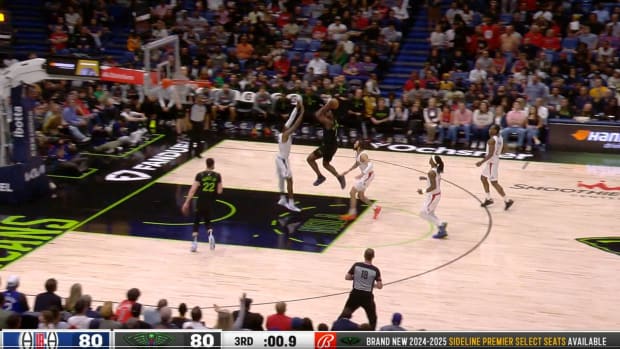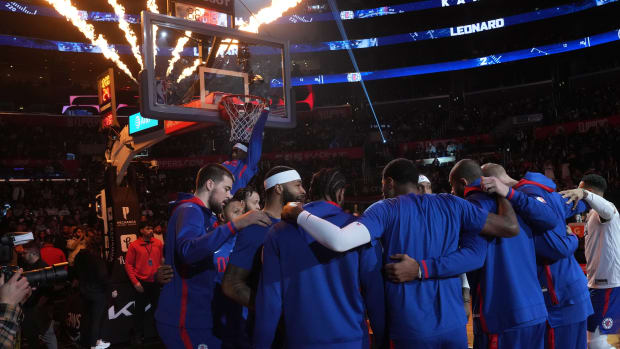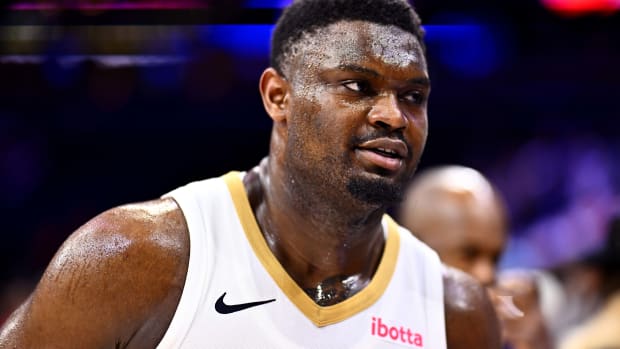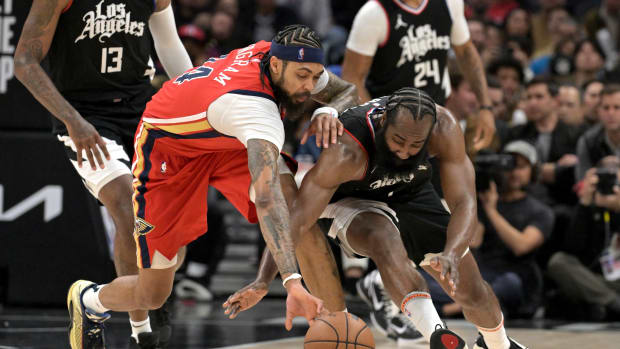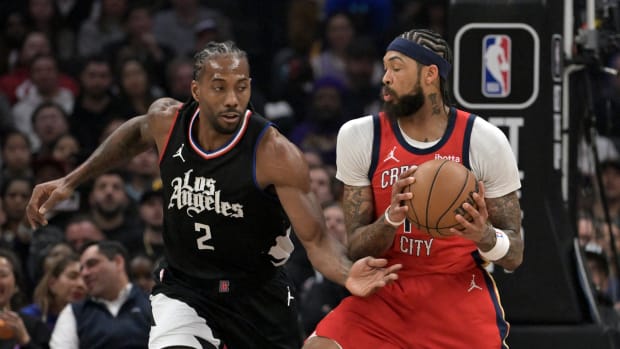LA Clippers vs. Utah Jazz Playoff Series Preview
LAC: 47-25 record (4th in the Western Conference); 116.7 OFFRTG (3rd in the league); 110.6 DEFRTG (8th in the league); 6.1 NETRTG (2nd in the league).
UTAH: 52-20 record (1st in the Western Conference); 116.5 OFFRTG (4th in the league); 107.5 DEFRTG (3rd in the league); 9.0 NETRTG (1st in the league).
Head-to-head matchup: Utah wins regular season series 2-1
The LA Clippers advanced to round 2 of the 2021 postseason. It took them seven games, three home losses, two elimination games and an obligatory “The Clippers are DONE—move the team to Seattle!” panic from the NBA mediasphere, but they advanced nonetheless, overcoming an all-time-great series from Luka Doncic.
Now, their reward is the Utah Jazz, statistically the best regular-season team in the NBA. The Jazz present an entirely different set of problems than the Mavericks. Let’s examine these problems and determine how well the Clippers can deal with them.
The egalitarian offense
Unlike Dallas, Utah does not have a heliocentric offense designed around a single superstar that slows the pace and picks apart defenses surgically. Instead, the Jazz love to run (sixth in the league in pace) and ping the ball around the court (sixth in the league in passes per game) until they find an open three-point shooter (first in the league threes as a percentage of field goal attempts).
One thing the Jazz and the Mavericks do have in common is their adoration of the pick-and-roll. Doncic was second in the league in pick-and-roll frequency as a ball-handler this season, and he tortured LA with it all series. If the Clippers were unable to fight over the screen, they were forced to either switch and ask a slower defender to guard Doncic in space (Ivica Zubac was played off the floor because of this) or double him, which led to numerous wide-open threes for role players (Tim Hardaway Jr. nearly won his team the series with his long-range mastery).
The Jazz run the play constantly as well, though their offense is instead centered around the screener. All-Star Rudy Gobert led the league in pick-and-roll frequency as the roll man among players playing more than 30 minutes per game. He averages 1.34 points per play out of pick-and-roll, shooting 71.4% from the field and drawing fouls on 26.6% of these possessions. He might be the Defensive Player of the Year (we’ll get to that side of the ball), but he doesn’t get enough credit for the gravity he creates as a roller.
Having said that, the Clippers did a decent job containing him during the regular season. In the two games in which Kawhi Leonard and Paul George played against the Jazz this season (we’re going to ignore the game in which the duo rested for the purposes of this article), they held Gobert to 10 points per game, 4.3 points below his season average. He fell into foul trouble in the first game, playing just 24 minutes (though the Jazz won 106-100), and was a -5 in their second game (in which the Clippers won 116-112).
However, in the process of limiting Gobert, the Clippers allowed the Jazz’s All-Star backcourt to cook them. In the first game, it was Mike Conley, going off for a season-high 33 points on 11-20 shooting, including 7-14 from three-point range. In the second, it was Donovan Mitchell, who dropped 35 points and nearly stole a win for the Jazz by scoring 12 points in the final 1:23 of the game.
When LA elects to drop back in the pick-and-roll and limit Gobert’s dives to the rim, it leaves these guards open above the arc. They’re both extremely capable shooters (Conley: 41.2% from deep on 6.6 attempts per game; Mitchell: 38.6% on 8.7 attempts) and if they pass up these threes, they’re both skilled from floater range. Ivica Zubac will no-doubt play a larger role in this series, as LA will need him for rebounding purposes against Gobert, but if the Clippers elect to switch in pick-and-roll, Conley and Mitchell could torch him the way Doncic did.
The stifling(?) defense
As previously teased, Gobert will likely be awarded his third Defensive Player of the Year award in four seasons. He’s the quintessential rim protector, allowing teams to shoot just 48% on shots within six feet of the rim when he’s in the game. His length, shot-blocking ability (averaging a career-high 2.7 blocks per game) and mobility around the basket would deter any team from attacking the rim.
Fortunately for LA, they do not rely on rim-attacking to generate their offense; the Clippers rank 23rd in the NBA in drives per game. Instead, they rely on the long ball. Though they are middle of the pack in terms of three-point attempts, they are so efficient on these shots (a league-leading 42.8%) that they generate a league-leading 35 points per game off of catch-and-shoot threes alone.
It should be noted that these figures are from a 72-game regular season, not their seven-game series against the Mavericks. The Clippers still shot a respectable 38.7% from deep against Dallas, but when the sample size shrinks, randomness begins to rear its head (see Marcus Morris Sr., a 47.3% regular season three-point shooter, going 0-6 in Game 1 against the Mavericks). Three-point shooting is far more volatile than shots at the rim, so it would be beneficial for LA to try to get to the basket as well (to try to put Gobert in foul trouble, at the very least).
Beyond Gobert, the Jazz are surprisingly limited in terms of elite defenders, considering they carry the no. 3 defense in the league. Mike Conley was once a phenomenal defender of smaller guards, but the 33-year-old has slowed down a bit, and he’s currently dealing with a mild hamstring strain that he suffered in Game 5 of their First-Round series against the Memphis Grizzlies (Ja Morant averaged 30.2 points on 48.3% shooting with Conley as his primary defender through those five games). Mitchell is also passable, but he’ll be giving up about six inches in height to his shooting-guard counterpart in Paul George, so Head Coach Quin Snyder might elect to hide him on someone less likely to punish him. Joe Ingles is feisty, but he too is getting a bit long in the tooth. The only truly elite wing-sized perimeter defender Utah has is Royce O’Neale, so Snyder will have the unenviable decision of choosing who to assign him to between Leonard and George. Whomever O’Neale isn’t guarding will likely have some sort of mismatch.
Although Zubac will no-doubt prove useful as a rebounder and rim protector in this series, the Clippers would be playing into the Jazz’s hands by favoring him over Nicolas Batum. Zubac is a non-shooter, and although he’s an excellent roll man, Gobert would much prefer to deal with that than guarding Leonard or George on switches. When the Clippers have five snipers on the court at once, even if Gobert is not involved in the screen action, he’ll be pulled away from the rim in order to stay home on whichever shooter he’s guarding. A five-out, like-sized switching lineup of George, Leonard, Batum, Morris and a guard (Reggie Jackson, Terance Mann etc.) would be tough for Utah to deal with, and it fared well in the Clippers’ regular season win against them.
Predictions
The roller coaster that was LA’s First-Round series, along with their playoff collapse last season, proved that there is almost no point making predictions when it comes to this team. They’ve lost after being up 3-1, and they’ve won after losing the first two games of the series at home. Having said that, LA does match up well against this Utah team on paper. They have the perimeter defenders to deal with Bojan Bogdanovic and the Jazz’s backcourt (Conley and Mitchell cannot move Patrick Beverley around like a child the way Doncic did, so he’ll likely get more playing time), and they have the perimeter shooting to draw Gobert away from the basket, where he is most impactful.
LA will have to be locked in defensively, or the Jazz will rain threes down on them just as Dallas did. Utah shot 40.6% from deep during the regular season on a league-leading 41.4 attempts per game. The Clippers are capable of shutting teams down when engaged, but the Mavericks proved that the Clippers tend to over-help and leave capable shooters (of which the Jazz have plenty) open.
It also might just turn out that Utah’s defense is too good. In addition to being an excellent rim-protecting team, they also allow the second-fewest three-point attempts per game, and this could stifle LA’s bread and butter. It’s a huge ask to limit both perimeter shooting and attempts at the rim against a postseason-level opponent, but Utah is capable of it. However, even if they do, there is one zone of the floor left—the fabled mid-range— and it is where LA’s stoic leader loves to operate.
So many playoff series come down to the simple question of: who has the best player in the series? The answer was up for debate in the first round, as Doncic cemented his status as a flat-out superstar, but there’s no case for Utah. Leonard is far and away the best player on either team, and the Jazz have limited options to slow him down. His superstardom was ultimately the difference-maker against Dallas, and there is no reason why it cannot be once again against Utah.
Prediction: Clippers win in six games
Related Stories
Kawhi Leonard Reacts to Game 7 Win Over Mavericks: 'We Never Gave Up'
Paul George's Reaction to Defeating Dallas Mavericks in Game 7

